Expand your YouTube reach through translation. Language shouldn’t be a barrier to enjoying or sharing video content. Find effective methods to translate your YouTube videos and connect with a global audience. This guide will walk you through the process, from leveraging YouTube’s tools to exploring third-party options. Whether you’re a content creator or a passionate viewer, you’ll find valuable tips to overcome language challenges and unlock new opportunities. Read on to learn more about translating YouTube videos and connecting with a global audience.
Outline
ToggleHow To Translate YouTube Videos?
If you’re trying to translate videos on YouTube for better accessibility, it’s simple to follow a few steps. YouTube has built-in tools that let you auto translate YouTube videos into various languages. Here’s a step-by-step guide to help you get started.
- Open YouTube and play the video you want to translate.
- While playing the video, click on the “Settings” icon located at the bottom of the video player.
- From the settings list, select “Subtitles/CC”.

- Click on “English (Auto-generated).” By default, YouTube videos are set to English translation.
- Click on the Settings icon again and select “Subtitles/CC”.
- Now, select “Auto-Translate” from the menu.
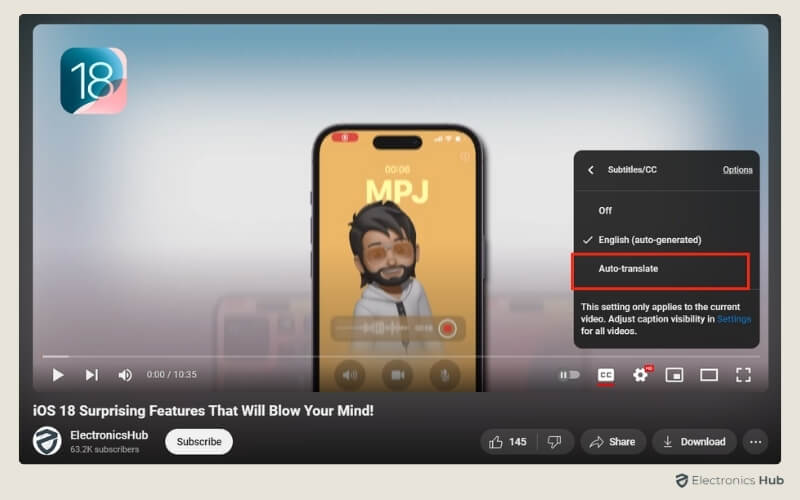
- You’ll find over 100 translation languages available. Choose the one you want, and YouTube will automatically translate the captions.

This method is simple and effective, allowing viewers from different linguistic backgrounds to enjoy your content.
How To Upload Multi-Language Subtitles To Your Videos On YouTube
If you’re looking to expand your audience, translating your uploaded YouTube videos into different languages is a great way to start. This process allows you to make your content accessible to viewers who speak other languages, broadening your reach.
Here’s how to translate your videos:
- On YouTube, click on your profile picture and select “YouTube Studio” from the menu.
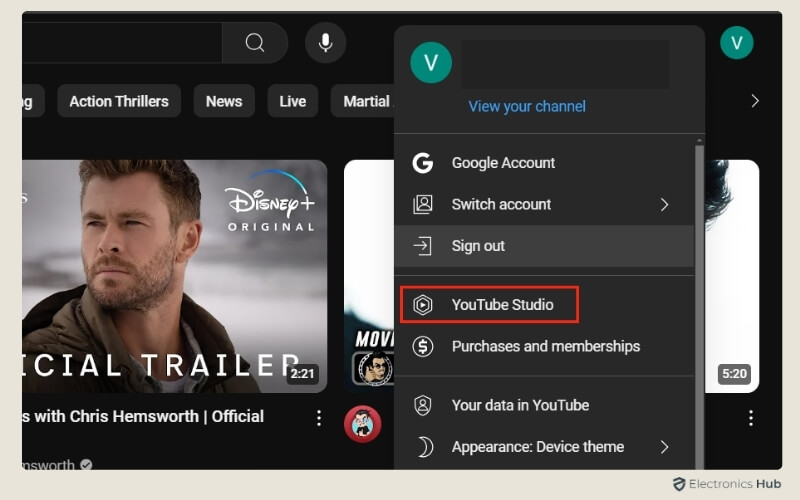
- Switch to the “Content” tab from the left-side dashboard.
- Hover over the video you want to translate, then click on the ‘Details’ option, indicated by a pencil icon.

- From the left-side menu, select “Subtitles” and choose the language you want to add.
- Click on the “Add Language” button.

- Hover over the language you selected and click on the “Add” icon, indicated by a pencil icon.
![]()
- Here, you can choose how to add the language: upload a subtitle file that’s already translated, type it manually, or use YouTube’s auto-translate feature.

- If you’re uploading a file, make sure to select the ‘With timing’ option for accurate subtitles, then click ‘Continue.’

Once you’ve added the subtitles using one of these methods, click on Publish to finalize the translation.
How To Translate Your YouTube Videos Titles & Descriptions?
Translating your video titles and descriptions is a great way to make your content more discoverable to viewers across different languages. This helps your video appear in search results for users who may not speak the original language of the content.
Here’s how you can translate titles and descriptions:
- Go to YouTube Studio and switch to the ‘Subtitles’ option from the left-side menu.
- Select the video you want to translate.
- If you haven’t selected the video subtitle language yet, YouTube will prompt you to choose one. Once done, click ‘Confirm.’
- Click “Add language” and choose the language you want to translate to.
- Under “Title & description,” click “Add.”
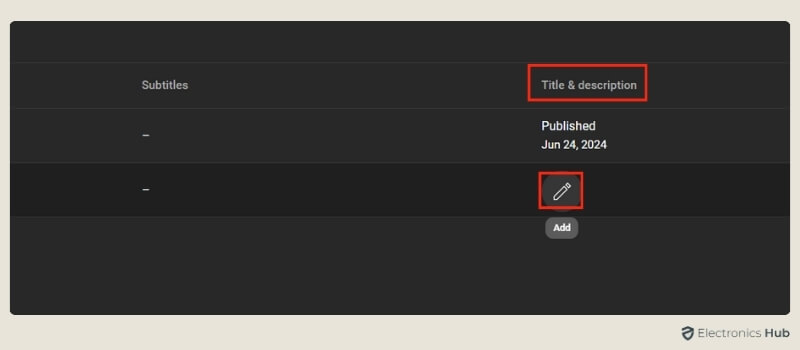
- Enter the translated title and description.
- Click “Publish” to save your changes.
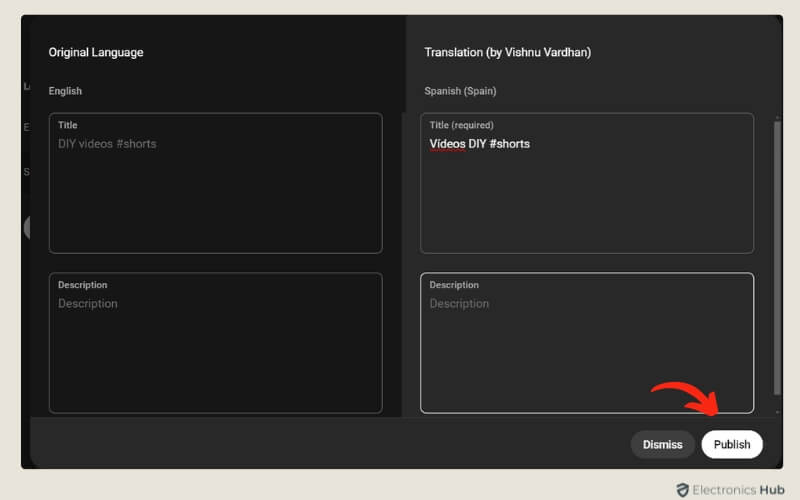
This simple process helps you reach a wider audience by making your videos accessible in multiple languages.
How To Translate YouTube Videos Without CC?
YouTube offers closed captions (CC) to translate videos, but not all videos have these captions available. If you want to translate YouTube videos without CC, you’ll need to use third-party tools. There are many options available, such as Kapwing, Flixier, and Veed.io.
Here’s how to translate your YouTube videos using these tools:
- Choose a Tool: Select a third-party tool that offers video translation services.
- Upload the Video: Go to the tool’s website and upload the YouTube video you want to translate. You might need to download the video from YouTube first using a video downloader.
- Add Subtitles: Use the tool’s features to add subtitles. Many tools allow you to either type subtitles manually or use auto-translation features.
- Select Language: Choose the language you want to translate the video into.
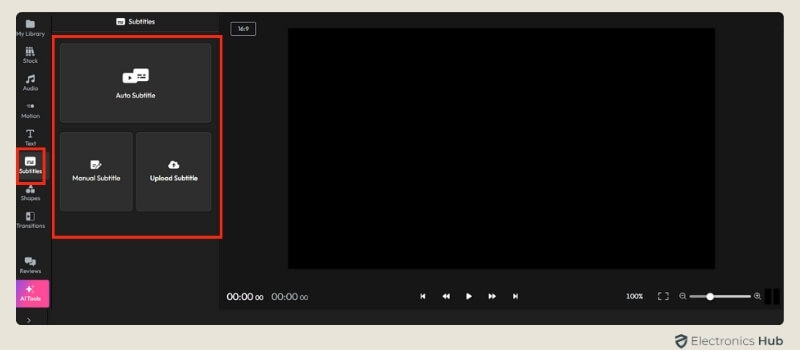
- Adjust Timing: Ensure that the subtitles are synchronized with the video. Some tools offer automatic syncing, while others may require manual adjustments.
- Export the Video: Once you’re satisfied with the translation and timing, export the video with the translated subtitles.
Using these tools can help you make your content accessible to a global audience, even if the original video lacks closed captions.
How To Translate YouTube Comments?
Engaging with your international audience is more manageable when you can understand their comments. YouTube provides a straightforward way to translate comments directly on the platform, enabling better interaction with viewers from various linguistic backgrounds.
Here’s how to translate YouTube comments:
- Open YouTube and play the video whose comments you want to translate.
- Go to the comments section and scroll to the comment in a foreign language that you want to translate.
- You’ll see the “Translate to English” line under the foreign text. Click on it.
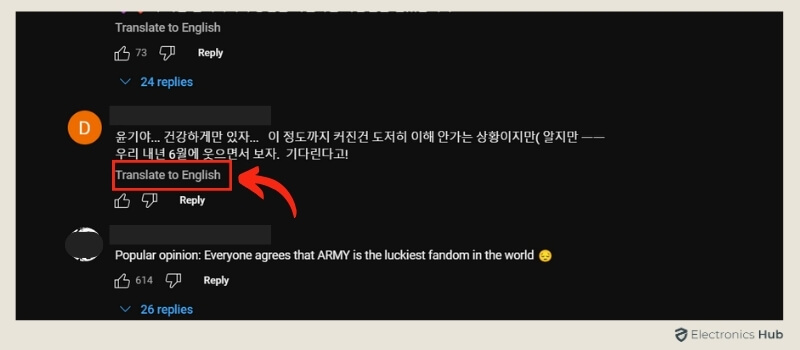
- The automatic translation provided by Google will appear. The target language is automatically detected, usually based on your language settings or location.
This feature allows you to seamlessly understand and respond to comments from viewers worldwide, fostering a more inclusive community around your content.
Also Check: How To See And Edit Comments History On YouTube?
Benefits Of Translating A YouTube Video
Translating your YouTube videos can significantly impact your channel’s reach and viewer engagement. Here are some key benefits:
- Increased Accessibility: Translation makes your videos accessible to a broader audience worldwide, breaking language barriers that could limit your viewer base.
- Enhanced Viewer Engagement: Viewers are more likely to engage with content that they can understand in their native language, which can lead to increased likes, shares, and comments.
- Boost in SEO: Translated videos are more likely to appear in search results across different languages, improving your video’s SEO and driving more traffic.
- Greater Inclusivity: Offering multiple language options makes your channel more inclusive, appealing to a diverse global audience.
- Potential for Higher Revenue: More views from a wider audience can lead to increased ad revenue and more opportunities for monetization through partnerships and sponsorships.
- Improved User Experience: Viewers appreciate the effort to accommodate their language, leading to a better overall user experience and higher satisfaction.
By translating your videos, you not only extend your reach but also enrich the viewer experience, making your content more effective and engaging globally.
FAQs:
Using YouTube’s built-in translation features is free. However, professional translation services or advanced software may involve costs.
Automatic translations can vary in accuracy. They are generally useful for basic understanding, but might not capture nuanced language or technical terms accurately.
The time can vary based on the video length and the method used. Automatic translations are immediate, but manual or professional translations may take longer.
YouTube supports a wide range of languages for subtitles and captions. However, the availability of automatic translations may vary depending on the language.
For live streams, you can integrate third-party services that offer live captioning and translation. This requires more setup and potentially incurs costs, but it significantly enhances accessibility.
Conclusion
So, you’ve reached the end of your journey to conquering language barriers on YouTube. With the techniques outlined in this guide, you’re now equipped to translate videos and enjoy content from around the world. So, go ahead, explore new cultures, and make the most of YouTube’s global community!

